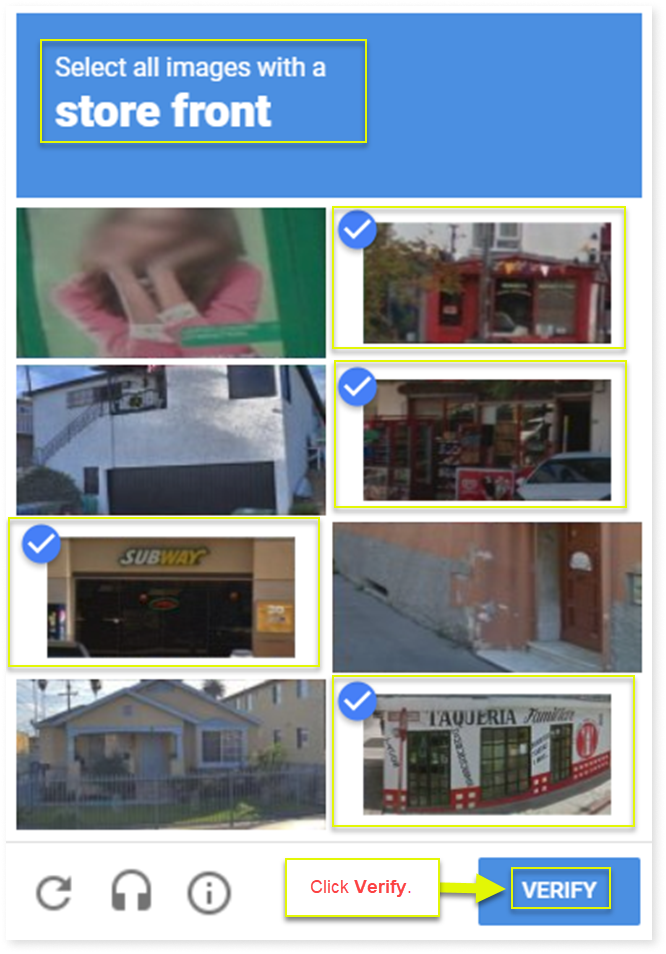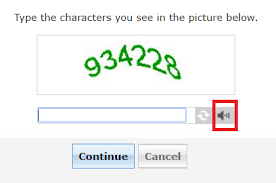Many of you may or may not be familiar with the term ‘CAPTCHA’ itself, but would have definitely come across it at some point while surfing the internet. Let me remind you.

You MUST have seen an image similar to this while trying to create an account on a website, posting a comment on a blog, or while purchasing something online. Tests similar to the image above are called CAPTCHAs, short for Completely Automated Public Turing Tests to Tell Computers and Humans Apart. So in this tutorial, we will be discussing what CAPTCHAs are, the main concepts behind these tests, and how they work in general. We will talk about the different types of CAPTCHAs, as well as some of the applications of CAPTCHAs, an immensely important one being data collection for Machine learning or Artificial Intelligence projects. So without further ado, let’s get started!
What is a CAPTCHA, and Why is it needed?
CAPTCHA is a test designed to differentiate humans from computers. It does this by focusing on traits or characteristics unique to humans. For example, when you sign up on a website, the system may ask you to type a sequence of characters, letters, or digits. Alternatively, it may prompt you to select specific images, such as pictures of cats. These tasks confirm that you are human because machines struggle to interpret distorted or puzzling text, whereas humans can.
For visually impaired users, CAPTCHA provides an alternative: Audio CAPTCHA. This version presents garbled spoken letters that humans can understand, but machines cannot. These measures prevent bots and automated programs from gaining unauthorized access to applications. CAPTCHA also protects applications by blocking bots from adding spam or malicious URLs to databases. This helps maintain performance and ensures security. Ultimately, CAPTCHA aims to stop anyone from exploiting system vulnerabilities.
Different types of CAPTCHAs
There are several different types of CAPTCHAs. We will introduce the six most popular ones here.
1. Character or Text Recognition
This is the most common type of CAPTCHA. It presents a sequence of characters with slight variations or distortions. You are required to type these characters into the provided input field.

2. Image Recognition
Image recognition CAPTCHA includes various types of image tests. These may involve naming images, selecting specific images from a set, or identifying the odd image out. This type of CAPTCHA exploits bots’ weaknesses in image recognition tasks, which are a human strength.

3. Audio CAPTCHA
As mentioned before, this type of CAPTCHA is for the visually impaired. It mostly consists of audio of spoken letters or numbers which are slightly distorted in order to puzzle a bot but easy for a human to comprehend.

4. Social media login
While registering on a website, you may be asked to sign up using your social media accounts, such as Facebook or Gmail. This prevents bots from registering, as they do not have social media accounts. It also saves time for genuine users by allowing them to use an existing account instead of creating one from scratch. Since these accounts are authentic, this method enhances the site’s security.

5. Math problem
A form appears with a simple math problem, requiring you to solve for the answer. Most of the questions involve simple arithmetics e.g. 8+2, 11–9, etc. These can be quite tricky for robots to solve because it has to perform not only image recognition but also a multiple semantic analysis of numbers and symbols to solve the problem.

6. Time-based CAPTCHA
Recording the amount of time taken to solve a form and differentiating between a bot and a human on the basis of that time is another type of CAPTCHA. Bots mostly fill out all the fields in a form immediately whereas humans naturally take some time to enter the information.
How does CAPTCHA work?
CAPTCHA works on the basis of analyzing the variations or differences between humans and automated computer programs. CAPTCHA is supposed to be 3 things:
- Easy for a human to solve
- Hard for a bot to solve or understand
- Easy for a tester machine to create and grade
The different types of CAPTCHAs mentioned above assign tasks that are difficult for computers but manageable for humans. CAPTCHA tests leverage human strengths in areas like invariant recognition, segmentation, and context. Humans can recognize characters even when they appear in different shapes, forms, or patterns. Even if characters overlap, humans can segment them and understand their proper context—something computers struggle to do effectively.
Data Collection and CAPTCHA
In addition to distinguishing between humans and computers, CAPTCHA helps gather data for training machine learning models. It functions as a crowdsourcing tool for data collection and annotation. For instance, image recognition CAPTCHA uses human input to label datasets. When users select all images showing a cat, they contribute to building a fully annotated dataset of cat images. The same concept applies to text recognition tasks.
CAPTCHAs not only improve website security but also play a crucial role in creating annotated datasets that aid in developing machine learning and AI models.
Advantages of CAPTCHA
- Data collection and annotation to create large annotated datasets for Machine Learning models.
- Prevention of fake registrations on a website by allowing Social Media logins. To prevent fake registrations, big websites like Facebook and Gmail are integrated with CAPTCHA.
- Prevention of spam comments by only allowing humans to post a comment. This is done to prevent spammers to wrongfully raise their websites’ search engine ranks by bombarding their websites’ comments section and leaving fake reviews of products.
- Increasing the security of online purchasing or shopping by ensuring that the buyers are only humans. At times, competitors of business may use invalid names, emails, shipping addresses to order your products so that you waste your time and money to deliver those products.
To train the industry-level algorithms, companies need data collection & annotation, and they are often very challenging. Moreover, it is difficult to control the quality within a company, especially your company is a small- or medium-sized company. Therefore, it is often more efficient to find another service that does laborious works for you. We could be your perfect solution!
Here at DATUMO, we crowdsource our tasks to diverse users located globally to ensure the quality and quantity on time. Moreover, our in-house managers double-check the quality of the collected or processed data. If you need data? If you need preprocessed data? Let us know!
To sum up, we began this tutorial by exploring what CAPTCHAs are and why they are essential. Their primary purpose is to distinguish human users from bots and prevent the exploitation of a site or application’s vulnerabilities. We discussed how CAPTCHAs leverage human strengths against computer weaknesses. Additionally, we examined the different types of CAPTCHAs, such as text, audio, and image-based options.
We also highlighted another important role of CAPTCHAs: collecting information to create fully annotated datasets for AI and machine learning. This approach effectively involves human intelligence in data labeling. Finally, we reviewed the overall benefits and significance of CAPTCHAs. These include enhancing website security and supporting dataset development for advanced technologies.



